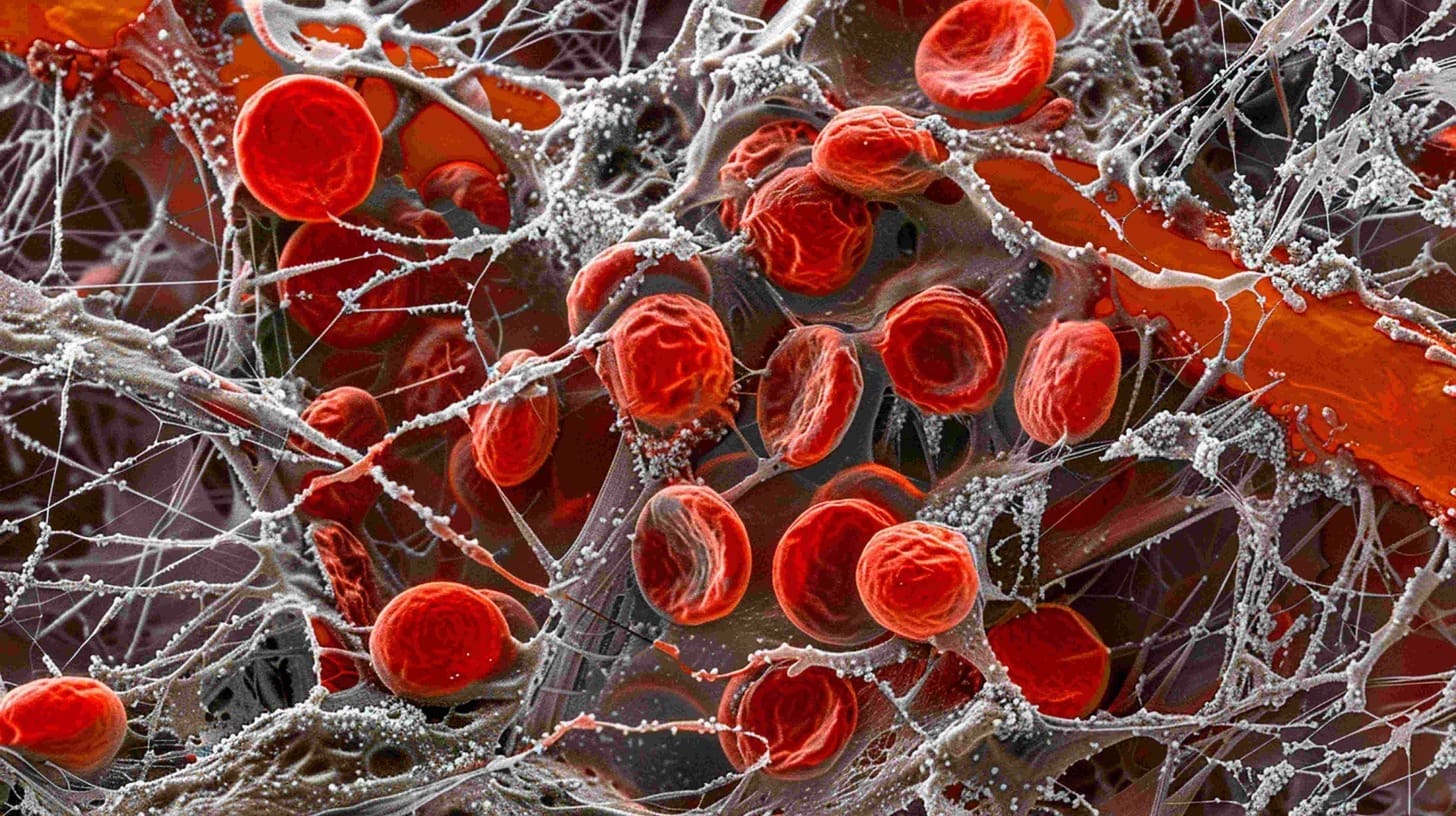Last Updated on November 27, 2025 by Bilal Hasdemir

PET Scan and Bone Cancer: Early Detection for Better Care
Finding bone cancer early is vital for effective treatment and recovery. At Liv Hospital, our specialists use a detailed and patient-centered approach to identify this challenging disease.
We rely on multiple diagnostic tools, including PET scan and bone cancer imaging, MRI, CT scans, and biopsy. Each test helps us understand how advanced the disease is and what type of bone cancer it may be. PET scans, in particular, allow doctors to see how cancer cells are functioning, revealing areas of abnormal activity that other scans might miss.
Our expert team carefully reviews every test result together to ensure each patient receives a personalized treatment plan. At Liv Hospital, we focus on precision, compassion, and early detection ” because every moment matters in the fight against bone cancer.
Key Takeaways
- Early detection of bone cancer improves treatment outcomes.
- A combination of imaging tests and laboratory tests is used for diagnosis.
- PET scans, MRI, CT scans, and biopsies are key tools for finding bone cancer.
- A team approach ensures accurate diagnosis and effective treatment planning.
- Liv Hospital offers detailed and focused care for finding bone cancer.
Understanding Bone Cancer and Its Detection Challenges

Bone cancer comes in two main types: primary and secondary. Each type has its own challenges in diagnosis. Knowing these differences is key to better detection and treatment.
Types of Primary and Secondary Bone Cancers
Primary bone cancer starts in the bones. Osteosarcoma, chondrosarcoma, and Ewing’s sarcoma are common types. Research shows each has unique features that affect diagnosis and treatment.
Secondary bone cancer spreads from other cancers, like the breast or lung. Knowing the difference between these types is vital for better care.
Why Early Detection Improves Treatment Outcomes
Finding bone cancer early makes treatment more effective. Early detection means a better chance of saving limbs and improving survival. It’s critical to catch it early to stop it from getting worse.
The Multidisciplinary Approach to Diagnosis
Diagnosing bone cancer needs a team effort. Radiologists, surgeons, oncologists, and pathologists work together. Their combined skills lead to a precise diagnosis and a treatment plan that fits the patient.
Initial Symptoms and When to Seek Medical Attention

The early signs of bone cancer can be hard to spot. But some symptoms are clear warnings to see a doctor right away. Bone cancer symptoms can look like other health issues, making it tricky to diagnose just by symptoms.
Common Signs That May Indicate Bone Cancer
Here are some signs that might mean you have bone cancer:
- Persistent pain or swelling in the affected bone or limb
- Limited mobility or reduced range of motion
- Weakened bones, leading to fractures with minimal trauma
- Visible lumps or deformities
- Systemic symptoms such as weight loss, fatigue, or fever in advanced cases
These symptoms can change based on where and what type of bone cancer you have. For example, osteosarcoma often causes pain and swelling in the limb it affects.
What Doctors Look for During Physical Assessment
Doctors check for signs of bone cancer or other issues during a physical exam. They look at the affected area for:
- Swelling, tenderness, or pain
- Reduced mobility or limited range of motion
- Visible deformities or lumps
- Neurological deficits if the tumor is pressing on nerves
A detailed physical exam is key to spotting bone cancer and deciding if more tests are needed.
Risk Factors That Increase Diagnostic Suspicion
Some risk factors make doctors think more about bone cancer. These include:
| Risk Factor | Description |
| Genetic Predisposition | Family history of certain genetic conditions, such as Li-Fraumeni syndrome or hereditary multiple osteochondromas |
| Previous Radiation Exposure | History of radiation therapy, especially at a young age |
| Paget’s Disease of Bone | A condition characterized by abnormal bone destruction and regrowth |
| Certain Genetic Mutations | Mutations in genes such as RB1 or TP53 |
Knowing these risk factors helps doctors be more careful during diagnosis. They consider bone cancer more when these factors are present.
X-ray Imaging in Bone Cancer Detection
X-ray imaging is often the first step in finding bone cancer. It’s a common and effective way to check for bone problems. X-rays can spot many bone issues, including cancer.
Appearance of Bone Cancer on X-rays
Bone cancer looks different on X-rays, based on the tumor’s type and where it is. X-rays can show dark spots or lesions in the bone. Osteosarcoma, a common bone cancer, looks like a destructive lesion with odd shapes. Sometimes, tumors can also create denser bone, seen as lighter spots on X-rays.
Limitations of X-ray in Early Detection
Even though X-rays are helpful, they can’t always find bone cancer early. Small tumors might not show up on X-rays if they haven’t changed the bone much. X-rays also don’t give much detail about soft tissue or how big the tumor is. So, while X-rays can suggest something is wrong, more tests are needed to be sure.
Detecting Bone Cancer through Knee X-ray
A knee X-ray can spot bone cancer, like osteosarcoma, which often happens near the knee. But not all knee problems are cancer. It’s important to match X-ray results with symptoms and other tests to confirm cancer.
In summary, X-rays are key in finding bone cancer, giving important clues for more tests. Knowing what X-rays can and can’t do helps doctors understand them better and plan the best care for patients.
MRI and Bone Cancer: The Gold Standard for Tissue Assessment
MRI is the top choice for checking bone tumors. It shows detailed images of soft tissues and bones. This makes it key for diagnosing and planning treatment for bone cancer.
How MRI Technology Visualizes Bone Tumors
MRI uses strong magnetic fields and radio waves to show body parts inside. It clearly shows bone tumors, their size, and where they are. This helps doctors know how big the tumor is and how to treat it.
Can MRI Detect Bone Cancer? Accuracy and Limitations
MRI is great at showing bone tumors, but it depends on the tumor. It can spot tumors and see how they affect bone and soft tissue. But it might not tell the difference between cancer and non-cancer tumors without more information.
MRI’s Role in Determining Tumor Extent and Surgical Planning
MRI is key to figuring out how big bone tumors are. This helps surgeons plan better. MRI shows the tumor and its area, helping surgeons remove it safely and keep more tissue.
| Aspect | MRI’s Role | Benefits |
| Tumor Visualization | Detailed imaging of tumor size, location, and relation to surrounding tissues | Accurate diagnosis and treatment planning |
| Tumor Extent | Assessment of tumor invasion into surrounding bone and soft tissue | Informed surgical planning and decision-making |
| Surgical Planning | Precise planning for tumor removal and preservation of surrounding tissue | Improved surgical outcomes and reduced risk of complications |
PET Scan and Bone Cancer: Tracking Metabolic Activity
PET scans are key in finding bone cancer. They track how cancer cells use energy. This helps spot cancer cells, which use more energy than regular cells.
Identifying Cancerous Cells
PET scans find cancer in bones by looking at energy use. Cancer cells use more sugar than normal cells. They use a special sugar, FDG (fluorodeoxyglucose), to find these cells.
- High sensitivity: PET scans are very good at finding energy changes, helping spot cancer cells.
- Early detection: They can find bone cancer early by spotting high-energy use areas.
- Monitoring treatment response: PET scans also check how well cancer treatment is working.
PET Scan Procedure and Patient Experience
The PET scan starts with a special sugar, FDG, being injected into the patient. The patient waits for an hour for the sugar to spread. They must stay calm and quiet during this time.
After waiting, the patient lies down for the scan. It takes about 30 minutes to an hour. The whole process, from start to finish, takes a few hours.
PET-CT Fusion: Combining Metabolic and Anatomic Information
PET-CT fusion mixes PET scan energy info with CT scan body details. This gives a full view of the cancer. It shows the tumor’s size, where it is, and if it has spread.
Benefits of PET-CT Fusion:
- Improved diagnostic accuracy: Mixing energy and body info makes cancer diagnosis more accurate.
- Better treatment planning: Detailed info helps plan better treatments.
- Enhanced patient care: It gives a clear picture of the cancer, leading to better care.
CT Scans: Detailed Bone Structure Evaluation
CT scans have changed how we check bones for cancer. They show both bones and soft tissues clearly. This makes them key to finding and checking bone cancer.
Capabilities and Limitations of CT Scans in Detecting Bone Cancer
CT scans show bones and soft tissues inside. They spot tumors, fractures, and infections well. But, they can’t always tell if a growth is cancer without more tests.
Detecting Metastases and Evaluating Tumor Severity
CT scans are key in finding cancer spread. They show where cancer has gone in the bones and tissues. This helps us know how serious it is and what treatment to use.
They also help us see how big and where the tumors are. This info is important for treatment plans.
Advanced CT Applications: Radiomics and Artificial Intelligence
Radiology is getting better with the new CT tech. Radiomics and AI are big steps forward. They use image data to find cancer patterns and predict outcomes.
These new tools could change how we find and treat bone cancer. As research grows, we’ll see better ways to diagnose and treat bone cancer.
Blood Tests and Laboratory Analysis for Bone Cancer
Blood tests are key in finding bone cancer. They show if certain biomarkers are present. But, they can’t confirm the disease alone.
Does Bone Cancer Show Up in Blood Work? Understanding the Limitations
Bone cancer is hard to detect in blood tests. Yet, some tests can hint at its presence by looking for biomarkers. It’s important to remember, blood tests are just one piece of the puzzle.
We check for signs of bone cancer in blood tests. We look for enzymes and proteins made by cancer cells or by the body’s reaction to cancer.
Key Biomarkers: Alkaline Phosphatase and Lactate Dehydrogenase
Alkaline phosphatase (ALP) and lactate dehydrogenase (LDH) are key biomarkers for bone cancer. High levels of these can mean bone cancer, among other things.
| Biomarker | Significance of Bone Cancer |
| Alkaline Phosphatase (ALP) | Elevated ALP levels can indicate bone formation and are often seen in osteosarcoma. |
| Lactate Dehydrogenase (LDH) | High LDH levels can be associated with various cancers, including bone cancer, and may indicate tumor burden. |
When Blood Tests Are Most Valuable in the Diagnostic Process
Blood tests are most useful when combined with imaging and other tools. They help track how well treatment is working and if cancer comes back.
Monitoring treatment response and catching cancer early are key to managing bone cancer. Blood tests are a way to do this without invasive tests.
By looking at blood test results with other diagnostic info, we get a clearer picture of the disease. This helps us make better treatment choices.
Bone Biopsy: The Definitive Diagnostic Procedure
A bone biopsy is the top choice for finding bone cancer. It takes tissue from the suspected area for a close look. This helps confirm cancer and find its type, which guides treatment.
Types of Bone Biopsies: Needle vs. Surgical
There are two main bone biopsy types: needle and surgical. A needle biopsy is less invasive. It uses a thin needle to get a small bone tissue sample. This is done under local anesthesia and with imaging help.
A surgical biopsy is more invasive. It needs an incision to get to the bone. This method takes a bigger tissue sample, key for some bone cancer diagnoses.
The Biopsy Procedure and Recovery Process
The biopsy method depends on the type. For needle biopsies, local anesthesia numbs the area, and a needle is used to obtain a sample. Surgical biopsies are more complex, needing an incision and possibly general anesthesia.
After the biopsy, some pain is common but can be managed with meds. Recovery is quick for needle biopsies but longer for surgical ones.
Histopathological Analysis and Molecular Testing
The tissue sample then goes through histopathological analysis. This looks at cell structure and finds any oddities. It’s key to confirming bone cancer and its type and grade.
Molecular testing might also be done. It looks for specific genetic or molecular tumor traits. This helps make a treatment plan that fits the patient’s needs.
Conclusion: The Integrated Approach to Bone Cancer Detection
Finding bone cancer early and accurately is a big challenge. It needs a team effort, using many tests and a group of experts. We’ve looked at how doctors use X-rays, MRI, PET scans, CT scans, blood tests, and biopsies to find bone cancer.
Each test has its own good points and limits. Together, they help doctors understand the cancer fully. A team of doctors, like radiologists and oncologists, works together. They look at test results, figure out how far the cancer has spread, and plan the best treatment.
Using a team approach to find bone cancer helps make the diagnosis better. It also improves care for patients and leads to better treatment results. Our goal is to provide top-notch healthcare. We support patients every step of the way, from diagnosis to treatment and beyond.
FAQ
How is bone cancer typically detected?
Doctors use imaging tests like PET scans, MRI, and CT scans to find bone cancer. They also do blood work and bone biopsies.
Can bone cancer be detected through blood work?
Blood work doesn’t always show bone cancer. But some tests might find high levels of certain biomarkers.
Can an MRI detect bone cancer?
Yes, MRI is great at showing bone tumors. It helps doctors see how big the tumor is and plan treatment.
What does bone cancer look like on X-rays?
X-rays might show bone cancer as a lytic lesion or a sclerotic lesion. A lytic lesion is where the bone is destroyed. A sclerotic lesion is where the bone is denser.
Can a knee X-ray show cancer?
Yes, a knee X-ray can show bone cancer if it’s in the knee. But it might not catch it early.
How do PET scans identify cancerous cells in bones?
PET scans find cancer by showing where cells are very active. Cancer cells are very active.
Does a CT scan show bone cancer?
CT scans can find bone cancer by looking at the bone structure. They can spot lesions or tumors. But, they can’t always tell if a lesion is benign or malignant.
What is the role of bone biopsy in diagnosing bone cancer?
Bone biopsy is key for diagnosing bone cancer. It removes tissue or cells for analysis. This helps doctors know what kind of cancer it is.
Are there different types of bone biopsies?
Yes, there are different bone biopsies. Needle biopsies and surgical biopsies are used for different things.
Can bone cancer be detected early?
Finding bone cancer early is very important. It helps treatment work better. A team of doctors working together can catch it early.
References
- Hosseini, H., et al. (2025). Bone tumors: A systematic review of prevalence, risk factors, and diagnostic modalities. Cancer Imaging, 25(1), Article 12. https://www.ncbi.nlm.nih.gov/pmc/articles/PMC11846205/
- Gerke, O., et al. (2025). Diagnosing Bone Metastases in Breast Cancer: A Comparison of 18F-FDG PET/CT and MRI. European Journal of Nuclear Medicine and Molecular Imaging. https://www.sciencedirect.com/science/article/pii/S000129982400093X






